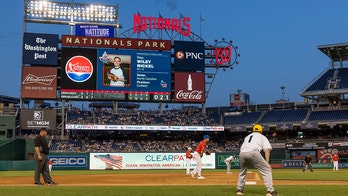For all of the high-minded grandeur placed on the majesty of the American legal system most people would be quite happy to never enter a courtroom, but television ratings -- demonstrated in the Casey Anthony and Conrad Murray trials -- clearly show broad interest in watching what happens inside the four walls of a trial court.
Notable cases have always generated attention from the public and in recent decades that has often included live televised or videotaped coverage from inside the courtroom. But until this summer none of those cases originated inside a federal trial court.
A new pilot program approved by the Judicial Conference, the policy making entity for the federal courts, allows for some cases to be videotaped and then posted online for all to see.
"I think if people could see the federal courts where you really have important national issues being decided by really great judges and lawyers on both sides fully prepared then people would say, 'I'm proud of this system. Now I have a better understanding of how government works,'" said U.S. District Court Judge Robert Lasnik.
Lasnik's Seattle courthouse is one of 14 across the country that will take part in the three-year program that could ultimately lead to a larger presence for cameras in the federal court system.
"It's definitely a first step," said Pepperdine University Law School Dean Deanell Tacha. "I think there are lots of federal judges who come down on the side of openness and come down on the side that cameras at some point are simple inevitable."
But Tacha, who was most recently a federal appellate judge in Kansas, also expressed the objections that many judges have about adding cameras to their courtrooms. She says the cameras can never offer a full view of what's happening and that viewers may be misled into what goes on. Furthermore, Tacha says cameras may encourage some towards self-promotion.
"I totally trust judges to control their courtrooms whether cameras are there or not," Tacha said. "But there are a lot of players in a courtroom. And my basic concern is always the integrity and trustworthiness of the judicial process."
The rules of the pilot program restrict coverage to civil cases and only where all parties, including the judge, agree to take part.
"That requirement for consent is going to, in effect, mean we're not going to get certain cases--civil cases that we really should get," Lasnik said. He predicts that litigants in a sexual harassment or employment discrimination case, for example, are unlikely to approve of the cameras.
A similar program was done in the early 1990s that Lasnik says was a huge success though nothing immediately followed that effort.
"I will be very interested to see what the results of the pilot program in the lower courts look like," Chief Justice John Roberts said in June before turning to address calls for opening the Supreme Court to cameras. "I'm sure we will take those into account in considering whether we need to move forward."
Cameras have been a regular presence in various state courts for decades. But the federal system sets its own rules and has been much less inclined to push forward on this issue. Only two out of 13 appellate courts allow for video recordings and federal rules expressly prohibits cameras from criminal courtrooms.
The first case under the new program that was videotaped and posted on the uscourts.gov website was a hearing in Memphis involving a local television reporter who was trying to stop the owner of a website from reposting bogus nude pictures that the reporter said was damaging her reputation.
The website's primary lawyer was unable to attend the hearing and says being able to watch it soon afterwards was a huge benefit. "Seeing the other party -- telling their side of the story -- it really gave me a lot more information and helped me to recommend to my client the best course of action," said David Gingras, lawyer for thedirty.com. "And we wound up settling the case very quickly and I'm sure that we wouldn't have done that without the cameras."
The two-and-a-half-hour hearing featured some shaky camera work and delayed production so the viewer was at times unable to see who was speaking. At one point the picture was lost entirely before being restored though the audio remained.
Because the cameras are controlled by the court and the posting of the video is delayed, cases that are part of the pilot project are unlikely to lead to any significant coverage by television stations. The online player is also cumbersome because it doesn't allow the viewer to scroll forwards or backwards. If you want to review something you just heard you have to restart from the beginning.
But these difficulties doesn't mean the project will lack impact.
"I think it's always a good idea to have cameras in the courtroom, the public needs to see what our courts are doing and having the cameras there allows that to happen," Gingras said.





